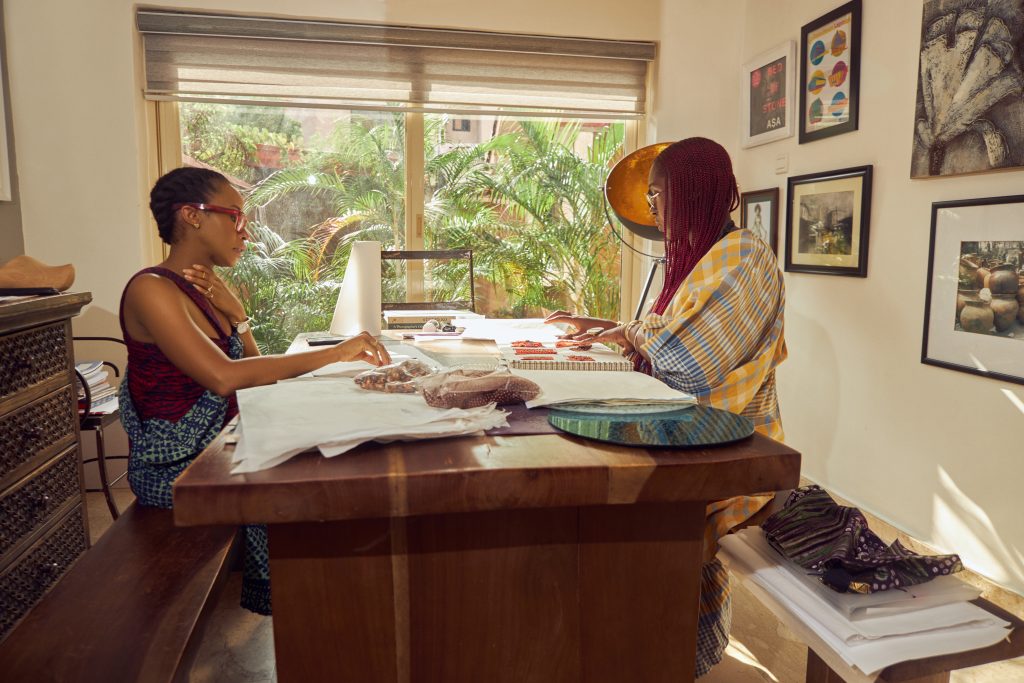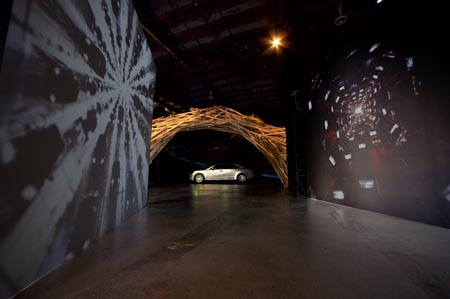Lexus’ Design Miami/ Installation, “Freedom to Move” by Tosin Oshinowo + Chrissa Amuah
Six masks designed to unify a global art audience, presented this Miami Art Week

Presented with Design Miami/, this Lexus-led conceptual design activation by Nigeria-based architect and designer Tosin Oshinowo and British-Ghanaian textile designer Chrissa Amuah prompts visitors (online and in-person) to consider the beauty in evolution. The piece, titled “Freedom to Move,” comprises six headpieces intended to represent our collective and sudden transition to wearing masks in public. Instead of infusing the six featured headpieces (two versions of three different designs) with inventive safety technologies, Amuah and Oshinowo explore the roles masks play in protection and celebration. Further, as the title implies, they represent the freedom a mask promises.

“As nomadic beings, it is unnatural to stand still, and we wanted to reconfigure how we move in a positive way in spite of the restrictions of motion the world now finds itself in,” Amuah says. “Our conceptual design makes a bold stride toward our new human existence and is enraptured in a marriage of ergonomics and spectacle,” Oshinowo continues.

Constructed from acrylic, beads, brass, bronze, leather, laser-etched elements and embroidery (which references the West African tinko method), the duo’s Egaro, Pioneer Futures and Ògún masks eschew medical functionality in favor of elaborate adornment. They also employ transparent panels on the front, which allow the wearer to relay facial expressions. Makers in Nigeria and the UK were tasked with parts of each iteration, which were ideated virtually and completed in-person, in Nigeria.
Up close, Amuah and Oshinowo’s designs boast influences from the past and future. Through international history research, the pair identified the head as a focal point for decoration and defense. Though mostly worn in times of crisis (ie: pandemic or war) masks needn’t be seen as eerie or dystopic. Instead, the designers turned to their surroundings and the ways in which African nations wear masks in their respective cultures, though placing this in a more contemporary context.

Specifically, the Ògún design “looked at the history of the Benin Kingdom, its influence on the Yorùbá people and contribution to modern civilization,” the pair explain. “They’re known for their advanced form of casting bronze sculptures that date back to 1200 BC. We utilized the same ancient techniques, working with a fifth-generation bronze caster in Benin. It’s a difficult process, as today bronze-casting is manufactured and mostly made with brass—yet we wanted to utilize the traditional techniques, which is why one iteration is made with bronze and the other with brass. The complicated design also required multiple attempts with 3D printing to find the right cast that could then be sent to Benin to be hand-sculpted in bronze and brass.”

To the contrary, Future Pioneers “plays between two different ages: Western Europe on the frontiers of technology advancement, seen through the pleated collar made of leather and suede that protects the mouth, paired with a nod to futurism seen through the astronaut dome protecting the eyes,” Amuah and Oshinowo continue.

Lastly, “Egaro takes its name from the site at Termit in eastern Niger, where archeological evidence confirms that Africa had independently invented its own iron technology 5,000 years ago. It is a celebration of the discoveries and advancement that originated in the continent,” they explain. This is the duo’s most obvious celebration of the African continent but references the unique countries and cultures.
Amuah and Oshinowo’s works also reference a pair of the Lexus design principles: omotenashi (exceptional hospitality) and takumi (expert craftsmanship). This is evident as they consider the human beneath each stylish headpiece. The works also tap into a collective desire for products catered to our specific needs—another pillar of the carmaker’s approach. “In keeping with the values of Lexus, the design is intended to be elegant, highly crafted, functional and luxurious,” Amuah and Oshinowo explain.

“We were so energized by Lexus’ prompt to create space for a design thought experiment—to look at the world around us, to explore the experiences that we as a collective humanity have faced this past year in order to find inspiration and new possibilities,” Oshinowo says. “We hope that our design exploration will spark joy and celebration,” Amuah adds.
In lieu of offering an in-person performance, Lexus, Amuah and Oshinowo worked with Spark Creative on virtual programming meant to accompany each headpiece. A three-part docuseries delves into the pair’s design process, while a string of digital releases will unify audiences abroad. The in-person installation will be presented at Design Miami/ through 6 December.
Images by Mark Cocksedge and Spark Creative courtesy of Lexus
“Freedom to Move” film by Spark Creative / Lexus












